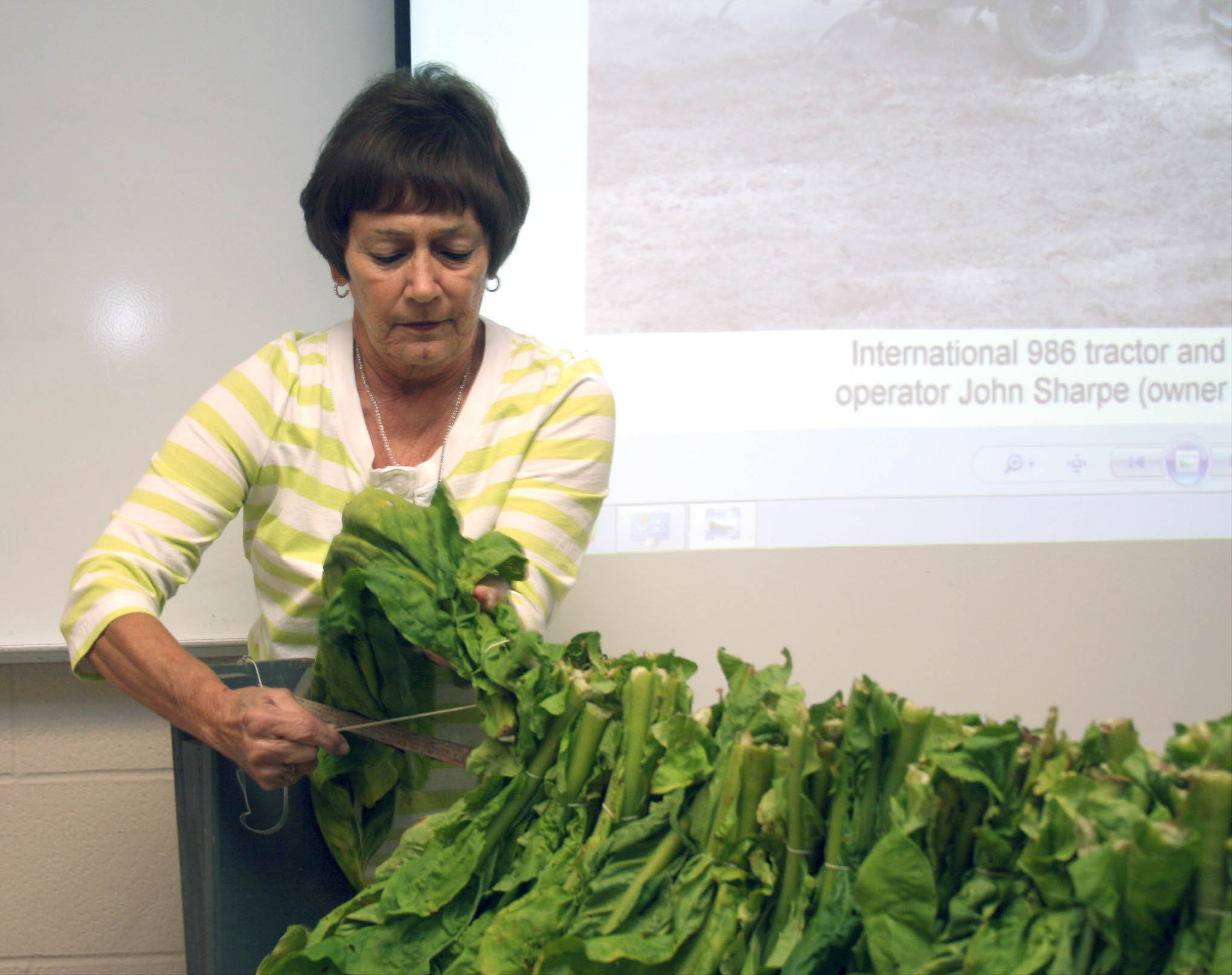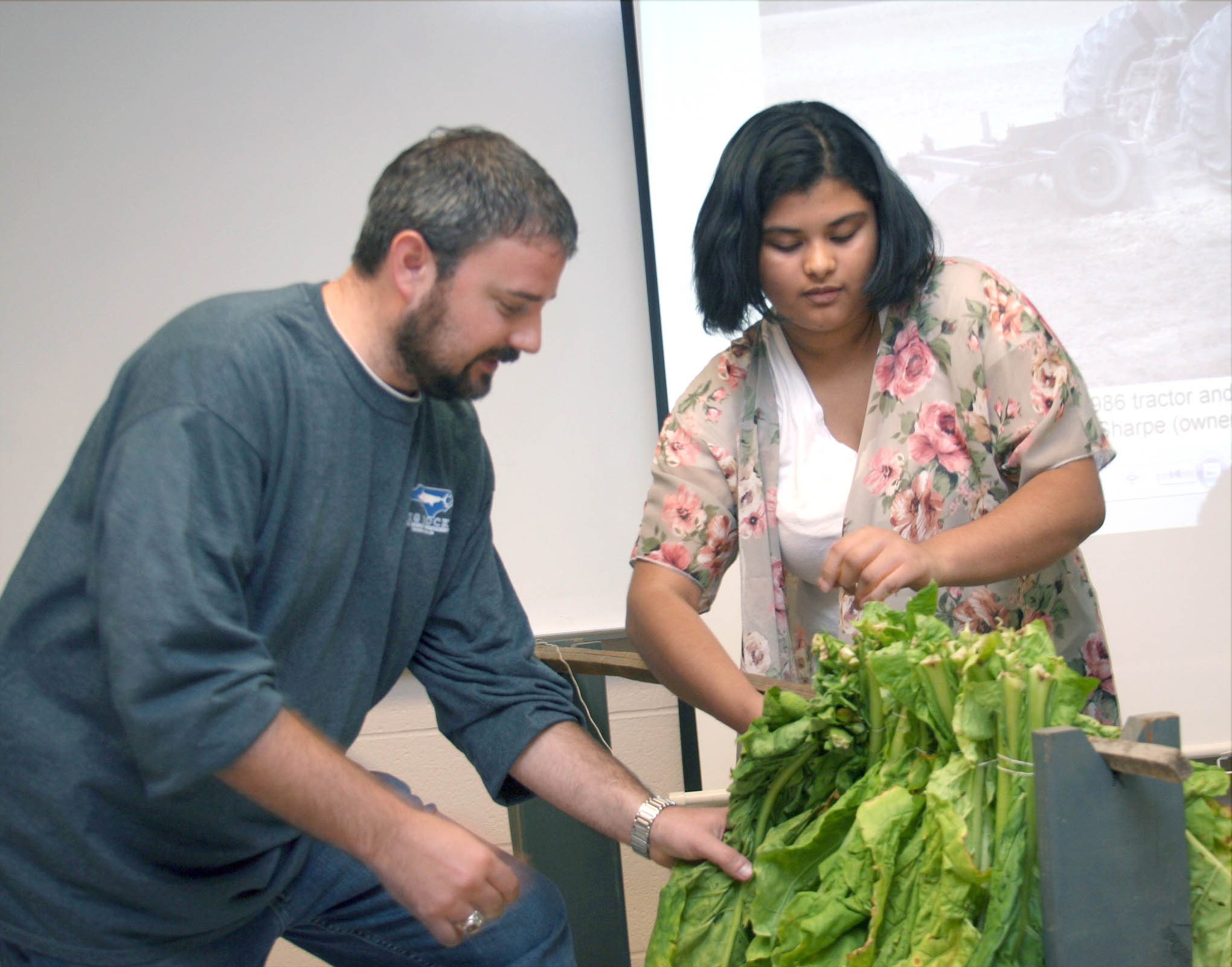
Kay Kelly shows Central Carolina Community College students how to loop tobacco.

SANFORD - It all began with "Chew Tobacco Rag," a tune you might never expect to hear blaring on a tobacco-free college campus.
The vintage ditty was just the initial shocker for Central Carolina Community College students walking into "Tobacco Farming in North Carolina: Then and Now," a hands-on look at the process and impact of tobacco farming across The Old North State.
Standing in an upstairs classroom behind a two-foot pile of green tobacco leaves, Patrick Kelly, a member of CCCC's student outreach staff, and his aunt, Kay Kelly, led students on a journey through his family tobacco fields, focusing on the arduous process of producing the cash crop. Along the way, they tossed in some insight on history, economics, and even a few tips for working a job most of these students had never even thought about.
At one point, Patrick scatters an armful of leaves on the floor in an aisle between two columns of tables. And when he does that, students immediate bolt up in their chairs and shift side to side for a better look. Then, bending over, he demonstrates the mechanics of what would seem like a fairly insignificant step: picking up leaves pulled from the stalk.
"If this is the row and you're walking down, you're bending over this far the entire row, and you're actually just doing this the entire day," he said, hunched parallel to the ground and pulling leaves into his arms in a specific way. "You're bent over, your back, the entire day."
For most of their hour-long presentation, the Kellys projected photographs from their family farm, showing an intensive and occasionally dangerous process that changed over time with the introduction of new technology. Preparing the fields. Putting plants in the ground. Weeding and spraying the rows. Pulling initial leaves off the plant. Picking and curing tobacco in a barn he described as "a big hair dryer."
For the balance of the time, Kay helped students loop tobacco. As Kay watched and provided pointers, two or three students bundled leaves while another tied them onto a six-foot stick that hangs in a barn to dry out leaves before the product is sold. That final stage is what makes the green leaves change color, earning tobacco its nickname, The Golden Leaf.
"Tobacco Farming in North Carolina: Then and Now" was the first event this fall in an annual series helping students explore local and distant cultures. With the historic importance of tobacco and this presentation's hands-on format, the event has become a popular and annual affair.
"Tobacco farming has had a major impact on North Carolina and our region," says Bianka Stumpf, CCCC's lead instructor for social sciences. "For generations, it defined our state, shaping our economy and the way we lived. That's been changing for a while, so now fewer students have direct ties to any kind of farming. This gives us a chance to discuss the impact of farming on our history and what we have become as Americans."
For information about Central Carolina Community College and its programs, visit its website, www.cccc.edu or call the college at 919-775-5401.

Kay Kelly shows Central Carolina Community College students how to loop tobacco.

Patrick Kelly (left) shows Central Carolina Community College student Paula Funes how to loop tobacco.